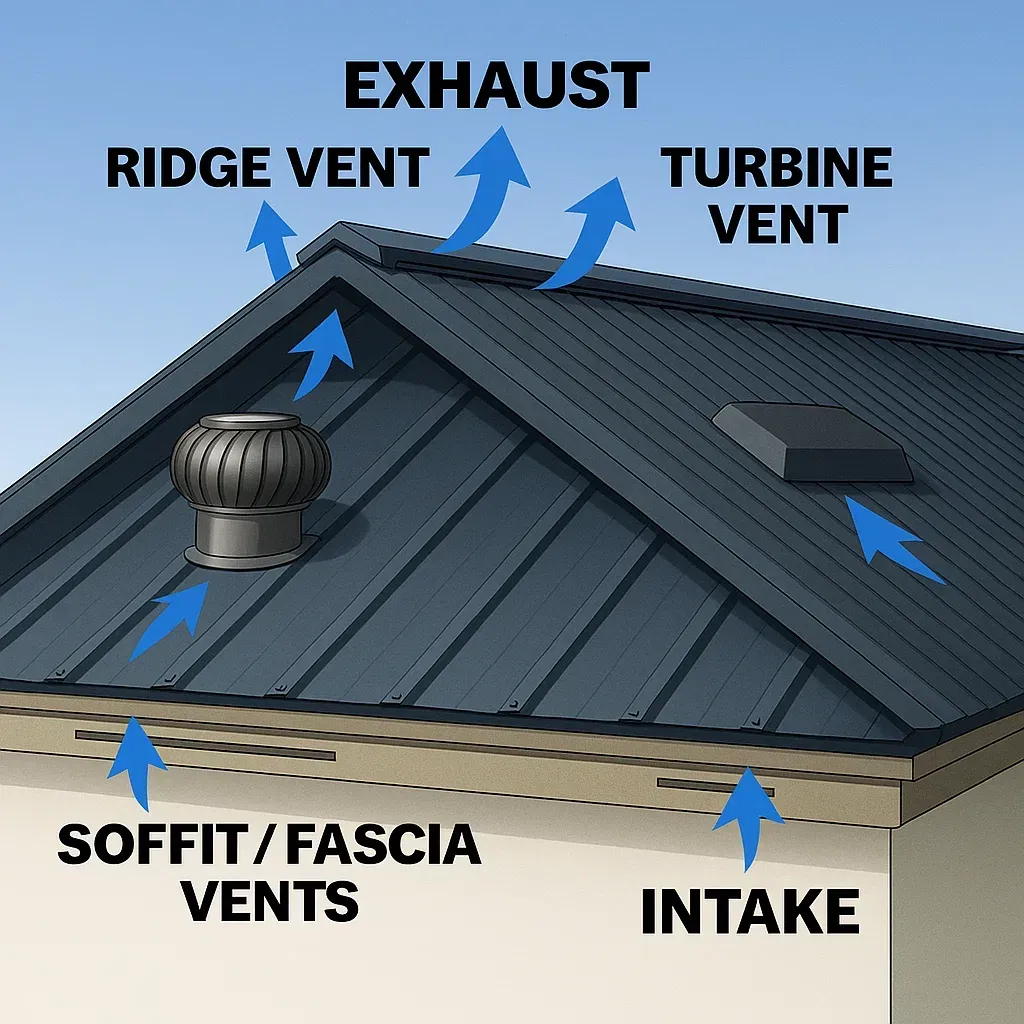
Roof Vents for Metal Roofing: Types, Benefits & Installation
A metal roof may last 50 years—but only if your attic can breathe.
Introduction:
Metal roofing is known for durability, fire resistance, and energy efficiency. But like any roof, it needs proper ventilation to perform at its best. Without it, trapped heat and moisture can damage insulation, shorten roof life, and raise energy bills. In this guide, we’ll explore the best roof vent options for metal roofs and how to install them for peak performance.
Why Ventilation Matters for Metal Roofs
Even though metal is impervious to water, what happens under the panels is just as important. Roof ventilation:
Prevents condensation that leads to rust, mold, and wood rot
Reduces attic heat to lower A/C costs
Extends insulation lifespan by keeping it dry
Protects fasteners & seams from thermal expansion damage
Improves roof longevity in all climates
Best Vent Types for Metal Roofs
1. Ridge Vent (Metal-Rated)
Pros: Continuous exhaust along the roof peak; low profile
Cons: Must match panel profile; requires proper flashing
Best for: Standing seam and corrugated metal roofs with matching ridge cap systems
2. Batten Vent
Pros: Runs along roof battens to create airflow channels under metal panels
Cons: Must be planned during framing
Best for: Vertical metal panel systems and tile-over-metal assemblies
3. Gable Vents
Pros: Easy to retrofit into sidewalls; no roof penetration
Cons: Passive only; works best when paired with intake vents
Best for: Homes with limited soffit space or vaulted ceilings
4. Static Box Vents (Low-Profile)
Pros: Budget-friendly, easy to install
Cons: Fewer per square foot of exhaust airflow; visible on the roof
Best for: Small attic spaces or supplemental exhaust where ridge vents aren't an option
5. Turbine Vents
Pros: Moves more air than static vents; no electricity required
Cons: Can be noisy in wind; visible from the ground
Best for: Homes in hot climates with large attic volumes

Intake Vent Options
Soffit Vents: Ideal for bringing fresh air into attic rafter bays
Fascia Vents: Great for homes with no soffit or shallow eaves
Eave Panels with Built-In Vents: For concealed intake under metal roof edges
Installation Tips for Metal Roof Vents
Use vent products specifically rated for metal roofing
Ensure vent flashing matches roof pitch and profile
Install underlayment with venting in mind (include baffles if insulating)
Maintain intake-to-exhaust balance (1:1 ratio of net free vent area)
For standing seam: Use raised-profile ridge vents with high-temp mesh
Common Mistakes to Avoid
Using plastic ridge vents not rated for metal systems
Skipping intake vents—exhaust alone won’t work
Poor flashing or sealant work around vents
Cutting vents after panels are already installed
Relying solely on gable vents for large attic spaces
Conclusion:
Whether you’re building new or upgrading, choosing the right roof vents for your metal roofing system is essential for keeping your attic cool, dry, and protected. From ridge vents to battens and fascia vents, the right ventilation strategy can extend your roof’s lifespan and boost your home’s energy efficiency—without compromising the durability that metal roofing is known for.